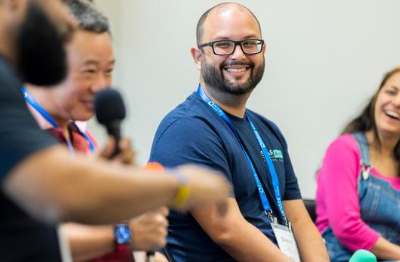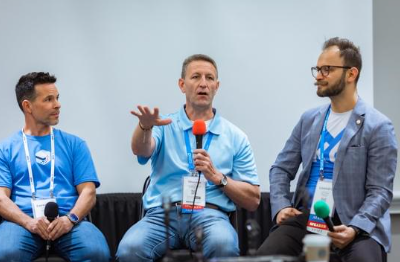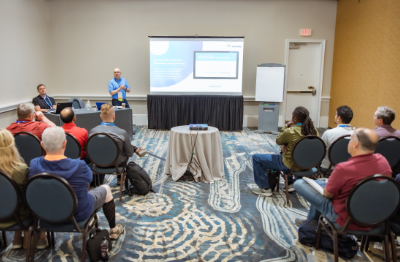Speak at STAREAST
STAREAST |  | |||||
Submit Your Proposal to Speak at STAREAST
Note: The submission deadline has closed.
STAREAST is one of the largest and most respected conferences on software testing in the world. If you have valuable experience testing software as a developer, tester, or business analyst, or expertise in leading and manage testing efforts, the STAREAST audience wants to hear your story. If you have a great tale to tell, your peers want to hear about it!

With a diverse, worldwide audience of practitioners and leaders, STAREAST participants are looking for compelling case studies, leading-edge innovations, inspiring success stories, and practical lessons in software testing. We are seeking proposals for talks in the hottest areas of testing:
|
Don’t see your topic on the list? No worries! We are always looking for fresh new ideas and topics. Prefer giving a less formal talk? Note on your submission an interest in leading a facilitated open space on your topic instead!
Not an experienced conference speaker? We’ve got you covered! We select new speakers for every conference and provide them guidance and support in everything from how to write a good presentation to tips on effective speaking. Think about what tools and practices have worked for your team or the biggest challenges you have overcome. Odds are good that if you faced it, others face it as well and need your help.
Speakers receive one complimentary conference registration if your session is selected. You will be automatically registered for the two-day conference, a $2,245 savings. Travel expenses are not covered.
Submission Requirements
Submitting only takes a few minutes. Here is the required information:
 Contact Information
Contact Information- Presentation Title
- Main Message - One sentence that describes the main idea and topic area.
- Description - An abstract that includes three parts: 1) briefly describes the testing challenge, problem or situation you faced, 2) details how you addressed this problem and what the results were, and 3) discusses the key lessons learns and takeaways that a conference attendee will leave your talk with. This description should be 150-200 words in length.
- Biography - 100-125 words sharing your industry experience and qualifications (third person point of view).
- Link to Speaker Video - (Optional but highly encouraged) Link to a video of a prior speaking engagement or a short introduction to your proposed session.
Sessions are 60 minutes in length, including Q&A time.
Selected speakers are notified approximately six months before the conference so you have time to prepare and gain any necessary permissions.
The contact information you provide on this form will be used for future correspondence for this speaking engagement. If your information changes, please call us at 904.278.0524 or 888.268.8770 or email the conference department at [email protected] with updated information. In addition, you will begin to receive special offers and other communications for conference events from TechWell (you may unsubscribe at any time).
Tips for Submitting a Proposal
We are often asked what makes a good speaking proposal. Here are some things we’ve learned over the years from reviewing them through the years.
First, decide which conference your presentation would be best suited to. Think about your audience. Write proposals that resonate with the delegates who will be attending the event. Don’t submit the same proposals to multiple conferences; remember the audiences are different.
- Focus on topics you are knowledgeable and passionate about. Those characteristics will make your proposal stand out.
- Good presentation titles are short, to the point, and say what the presentation is about. Don’t hide the topic. Be bold.
- For the main message, write one sentence describing the focus of your presentation. If you can’t condense it, you may have multiple but independent good ideas. Aim to isolate the most important one.
- From the reviewer’s standpoint, the presentation description is the most important section. The best descriptions typically are split into two parts. In the first part, concisely identify a challenge, problem, or situation you want to present. In the second, describe your approach to address the challenge or solve the problem, including what the delegates will learn and take away from your presentation.
- Avoid “IOU descriptions,” e.g., “In my presentation I’ll talk about cool stuff.” Give the reviewer details about what that “cool stuff” will be, so that he or she can make an informed decision.
- Avoid product sales pitches (either disguised or blatant). It is certainly acceptable to illustrate your solution with a tool, but the solution itself should be the focus of the presentation.
- Take some time to craft a good description. It’s easy to detect the ones that have been slapped together on the way to something else.
- Check out prior topics and descriptions here.




